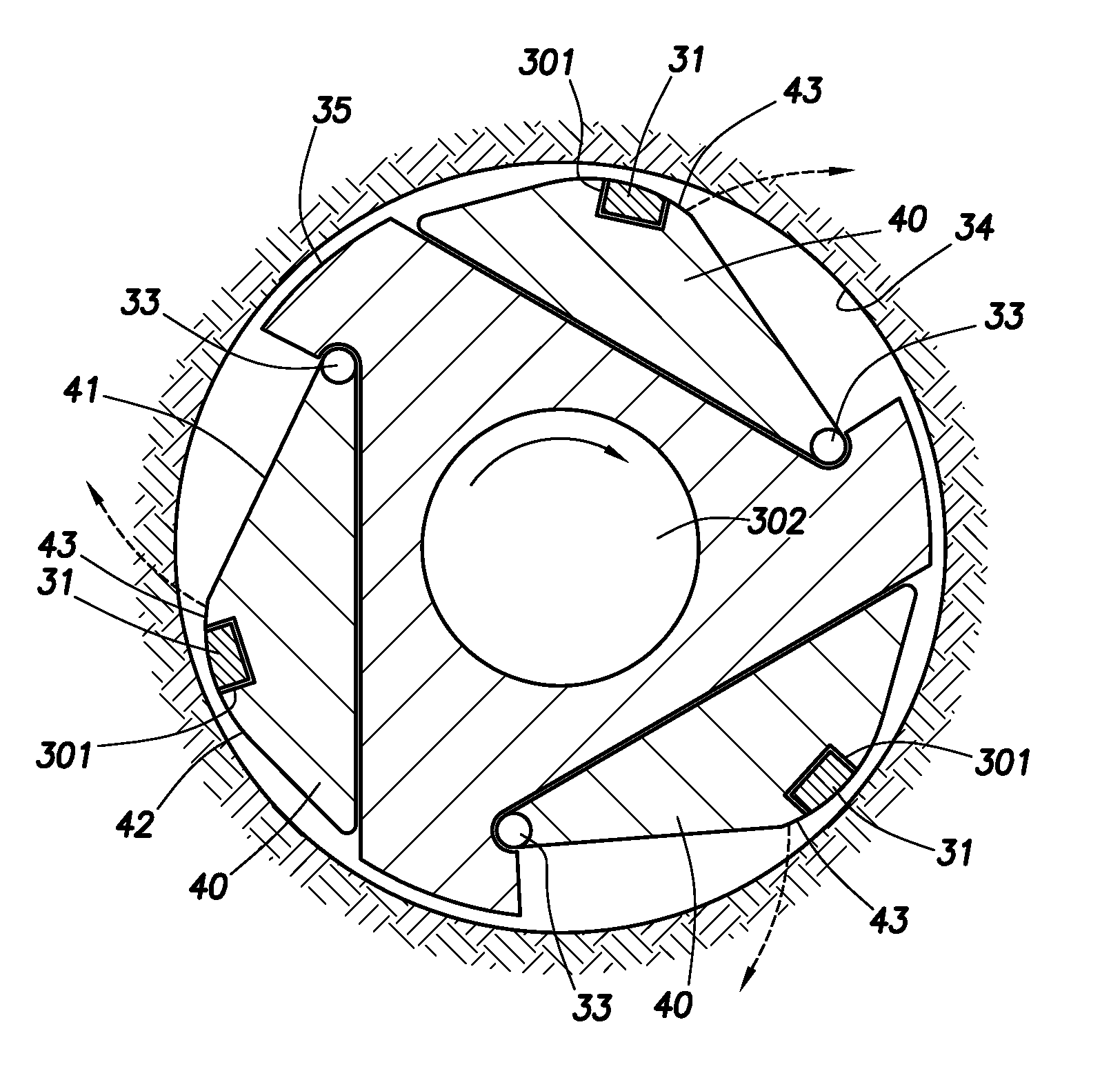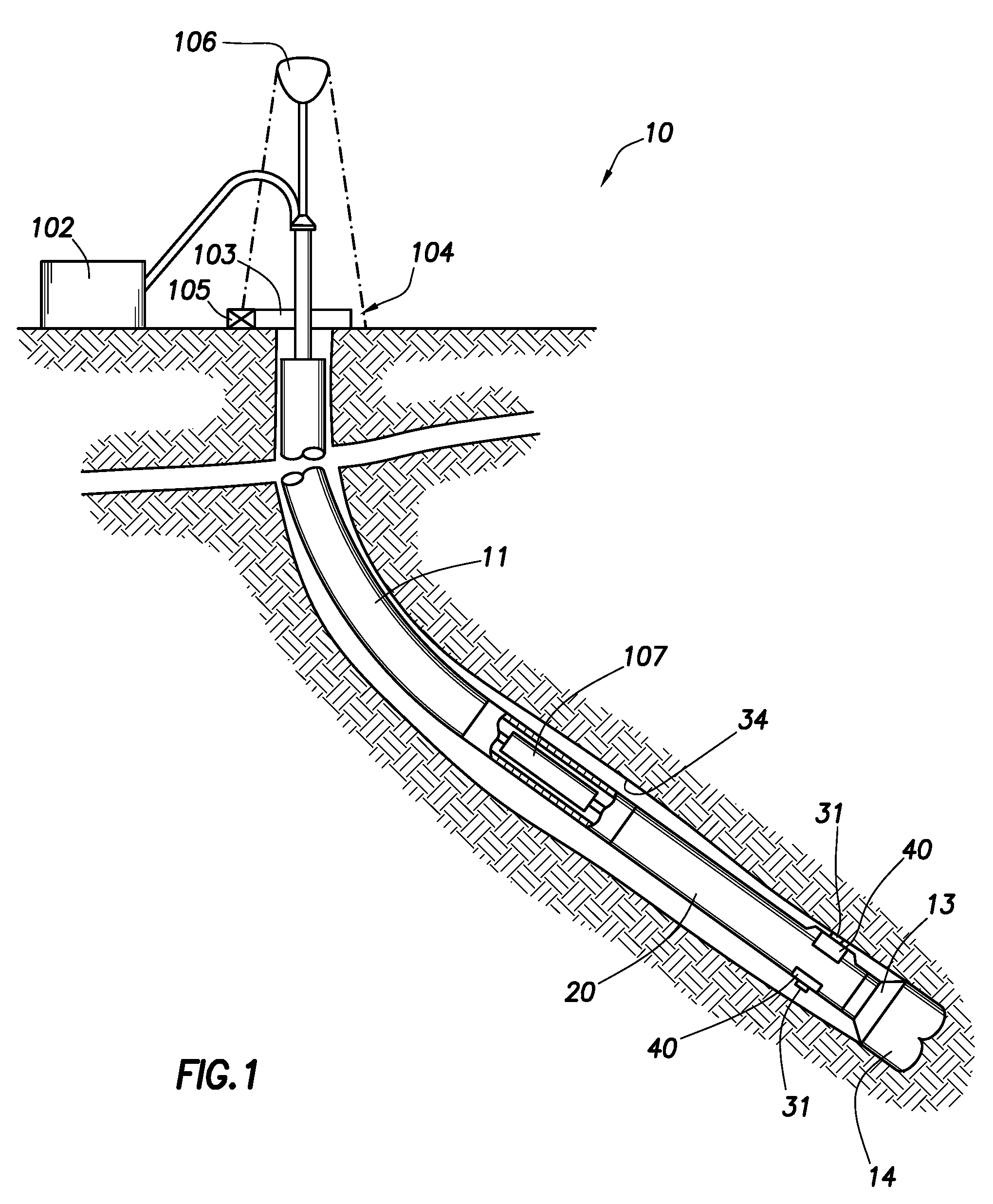System and method for reducing the borehole gap for downhole formation testing sensors
a technology of formation testing and system and method, which is applied in the direction of survey, borehole/well accessories, directional drilling, etc., can solve the problems of reducing the measurement accuracy, weak impact, and weak impact of shallower looking devices, so as to reduce the borehole gap, little or no
- Summary
- Abstract
- Description
- Claims
- Application Information
AI Technical Summary
Benefits of technology
Problems solved by technology
Method used
Image
Examples
Embodiment Construction
[0023]FIG. 1 shows diagrammatically a typical rotary drilling installation 10 in which the system and method according to the present invention may be employed. In the following description the term “clockwise” refer to the direction of rotation as viewed looking downhole.
[0024]As is well known, the bottom hole assembly includes drill bit 14, and is connected to the lower end of drill string 11 which is rotatably driven from the surface by rotary table 103 on a drilling platform 104. The rotary table is driven by a drive motor, indicated diagrammatically at 105, and raising and lowering of the drill string, and application of weight-on-bit, is under the control of draw works, indicated diagrammatically at 106.
[0025]The bottom hole assembly includes modulated bias unit 20 which drill bit 14 is connected and roll stabilized control unit 107 which controls operation of direction drilling bias unit 20 in accordance with commands provided to the bias unit 20. Directional drilling bias un...
PUM
 Login to View More
Login to View More Abstract
Description
Claims
Application Information
 Login to View More
Login to View More - R&D
- Intellectual Property
- Life Sciences
- Materials
- Tech Scout
- Unparalleled Data Quality
- Higher Quality Content
- 60% Fewer Hallucinations
Browse by: Latest US Patents, China's latest patents, Technical Efficacy Thesaurus, Application Domain, Technology Topic, Popular Technical Reports.
© 2025 PatSnap. All rights reserved.Legal|Privacy policy|Modern Slavery Act Transparency Statement|Sitemap|About US| Contact US: help@patsnap.com



